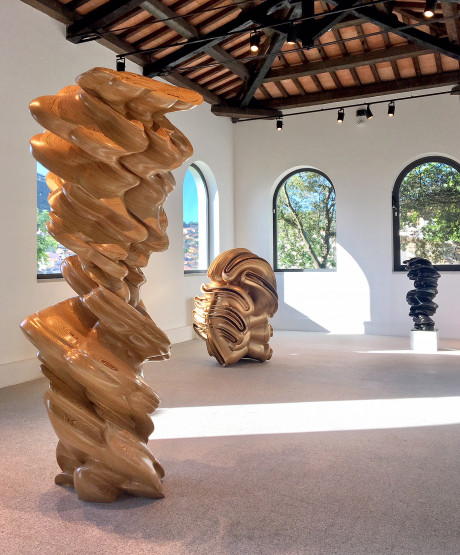
Tony Cragg – Endless Form at the Museo Nivola, Sardinia, Italy
—
The exhibition Tony Cragg – Endless Form at the Museo Nivola, curated by Guiliana Altea and Antonella Camarda, is the first solo exhibition in Italy by the renowned British sculptor. An accompanying catalogue has been published by Scheidegger and Spiess, with essays by Guiliana Altea, Antonella Camarda, Tony Cragg, and Mark Gisbourne.
"The exhibition brings the work of one of the greatest contemporary sculptors to Sardinia for the first time. In a space flooded with light, Cragg’s monumental sculptures are in dialogue with each other, the architectural context, and the landscape that can be glimpsed through the arches of the large windows. Its volumes are at once both imposing and light, and as a result the works take firm possession of the space, without seeming static. On the contrary, they seem to be in a state of constant flux, following the inclination of the rays of light and the movements of the viewer around them.
They are dynamic objects bearing the traces of the processes that created them, processes that first begin with drawings that are often figurative, and in encountering the material are guided by its internal force. As the artist has stated, “Even if it’s nothing linear, things generate something. There is a kind of self-propagating, self-generating energy within the material itself.”
In general terms we tend to think of sculpture as pure form, mass, and volume. In Cragg’s work, however, the quality of the surface facture, its texture and hue are equally important. Variations in finish make similar forms seem totally different, rendering the skin of the sculpture warm or cool, smooth or rough, glossy or matte.
Like the luster of a 1950s Buick or rusty like the hull of a decommissioned ship, Cragg’s works combine associations with the machine aesthetic and clear references to nature. His sculptures seem to obey natural laws that govern living organisms, one evolving from the other, and growing out of themselves. Varied and changeable, in contrast to the repetition of industrial objects, they react and evolve in contact with the surrounding environment. This is also the origin of their characteristic abstract sensuality. They are erotic objects, their eroticism deriving as much from the suppleness of their curved volumes and tactilely seductive surfaces as their latent anthropomorphic roots (many of them derive from the transformation of faces or parts of the human body)."
Guiliana Altea and Antonella Camarda
For more information please visit the website of the museum.